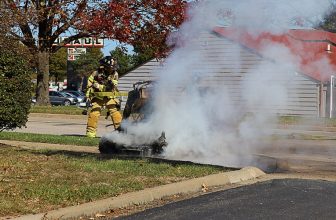How to Repair a Dry Cracked Lawn
If you’ve ever seen a dry, cracked lawn and wondered how to fix it, we’re here for you. This blog post will outline the steps on how to repair a dry cracked lawn so that it’s green and healthy again! The first step to repairing a dry cracked lawn is water. Watering the grass will help keep it green and healthy and allow for time for any cracks in the ground or soil to heal.

The second thing that should be done is aeration of the soil. Aerating helps open up spaces between dirt particles, which leads to better drainage and prevents roots from getting clogged with soil and moisture. Stick with this blog post till the end to learn more information about repairing dry, cracked lawns.
Needed Materials:
Garden Hose or Sprinkler:
To water the lawn, you will need a garden hose or sprinkler. Make sure to choose one that has a good reach and can cover your entire lawn.

Aeration Tools:
There are various tools available for aerating your lawn such as manual push aerators, spike aerators, core aerators, and more. Choose the one that best suits your needs and budget.
Lawn Fertilizer:
After aerating and watering the lawn, it’s important to give it a boost of nutrients with a good quality lawn fertilizer. Make sure to choose one that is suitable for your type of grass and read the instructions carefully.
Six Things That Causes Cracks on Your Lawn
1. If the Soil is Too Wet:
Enough water is good for your lawn, but too much can cause problems. For example, it can make the soil too soft and cause air to escape when you walk on the surface. To fix this problem, aerate your lawn by using a core aerator (which pulls out plugs of soil) to let more oxygen get in the ground. This helps the water to move down deep instead of sitting on top.
You can also add compost to the soil, which helps improve drainage and adds nutrients for healthy grass growth. Just be sure not to overwater your lawn in the future.

2. Drainage Issues:
If your lawn experiences drainage issues, there could be two main reasons for this problem. First, poor grading around the foundation causes water to run toward an area, and second, compacted soil. When water runs toward an area and collects there, the ground becomes saturated with too much water. This causes the soil to shrink away from your grass roots, creating large cracks in your lawn allowing weeds to grow through. To fix this problem, consider re-grading the area around your foundation or adding a drainage system.
You can also use aeration to help alleviate compacted soil. This will create more space for air and water to move through, reducing the amount of saturation. It also helps improve overall soil health.
3. If You Have Clay Soil:
Clay soil shrinks more than other soils, causing a more compacted soil base, which is harder for the roots to grow into. However, this shrinkage also causes large cracks in your lawn, making it susceptible to weeds and grass diseases. This can be fixed by adding compost to the soil, which helps improve drainage and loosens the soil. You can also aerate your lawn regularly to help alleviate compaction.
It’s important to note that clay soil can still be a good base for lawns, but it requires regular maintenance and proper care. You can also consider overseeding with a grass variety that is better suited for clay soil.
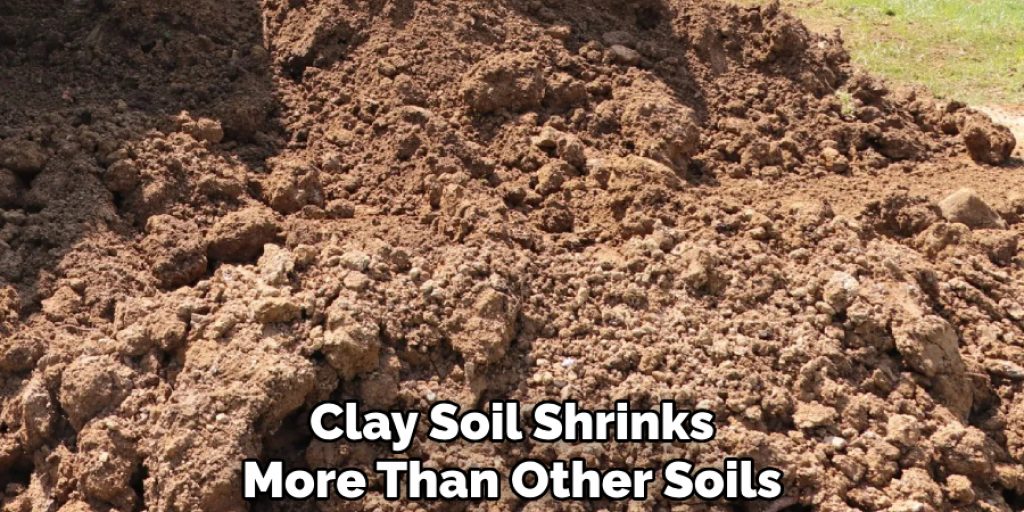
4. Compaction From Heavy Foot Traffic:
If you like to do outdoor activities such as playing with your kids or pets, compaction can occur in the soil where they walk and play. This compaction compresses the soil, which damages the grassroots and their ability to take in nutrients and water. To fix this problem, high-traffic areas should be regularly aerated. You can also create designated paths or play areas to prevent compaction on the rest of your lawn. You can also use reinforced turf or artificial grass in some areas to reduce wear and tear on the natural lawn.
5. If You Have Drought-like Conditions:
Drought-like conditions are the most common cause of cracked areas over your lawn. It is tough to maintain a constant level of moisture in dry weather, and many times, we water our lawns two or three days apart, which does not give grass root systems enough time to absorb and store the proper amount of water. This lack of moisture causes the grass to weaken and slow its growth, leading to visible cracks in the soil. To combat this problem, make sure to water your lawn deeply once a week rather than shallowly every few days. Deep watering helps encourage deeper root growth, making your lawn more resilient to drought-like conditions.
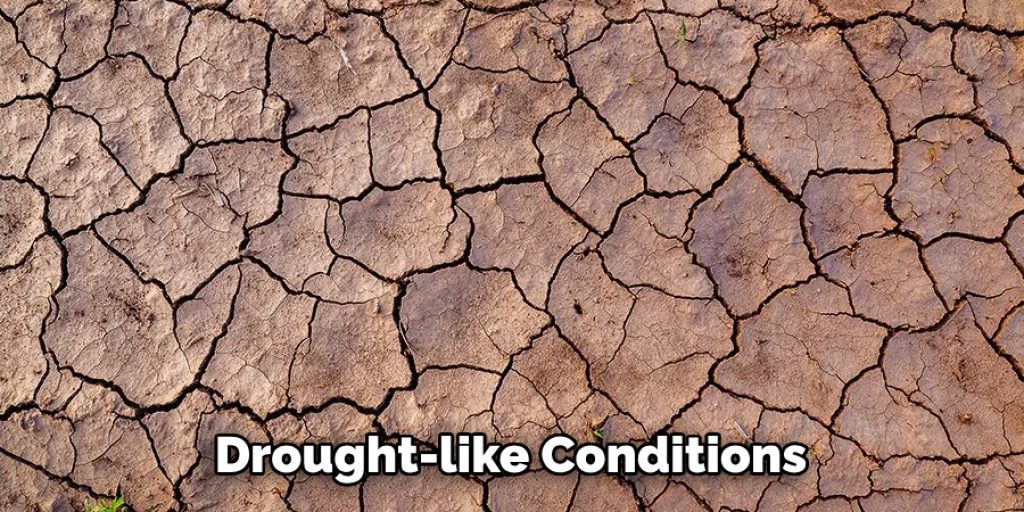
6. Poor Lawn Care Practices:
Finally, the last common cause of cracked lawns is poor lawn care practices such as mowing too low or not often enough, not fertilizing regularly, or neglecting to water during dry spells. All of these practices can cause stress on your lawn and weaken its overall health. To avoid this problem, make sure to mow at the correct height for your type of grass and maintain a regular mowing schedule. Fertilize every 6-8 weeks with appropriate nutrients and pay attention to weather patterns to make sure your lawn gets enough water during dry spells.
By following these steps for repairing a dry, cracked lawn, you can restore the health and beauty of your lawn in no time. Remember to regularly aerate, water deeply and appropriately, and take measures to prevent compaction.
With proper care, you can have a green and healthy lawn all year round! Keep an eye on your lawn and address any potential problems as soon as possible to avoid damage and costly repairs in the future. Happy gardening!
Seven Ways How to Repair a Dry Cracked Lawn Properly
1. Watering Correctly:
To prevent dry, cracked areas over your grass, you need to keep it moist so it grows the right way into the soil. Try to water your lawn so it begins with 6-10 inches of water per week for 15 minutes each time. Then, if the weather is sweltering, you need less water. It’s best to water only in the morning or evening so it doesn’t evaporate in the heat of the sun.

2. Aeration:
Before seeding, aerating an area will help hair roots get enough air and nutrients to make a thick lawn over dry, cracked areas. It also opens up the soil for better water penetration, which causes grass to grow smoothly without dry, cracked areas. For clay soil, you can use compost as a top dressing to help the soil retain moisture better.
3. Seeding:
Seeding over dry, cracked areas gives you many choices in seeding types on your lawn with different species and varieties of turfgrass with different strengths. You have to research these different kinds to find out which one is the best for you! Choose the right one for your lawn, such as a Bermuda or Zoysia grass type that is usually more resilient in drizzle and drought conditions.
4. Scalping:
Scalping your lawn before seeding can help dry, cracked areas so that plants will grow there with more robust root systems, more closely together and more profound than they would without scalping. This way, more roots can spread sideways out to the surrounding soil. The more roots and grass you have, the less space there is for weed seeds to grow.
5. Fertilizing:
Adding fertilizer helps grass grow faster and stronger, improving dry areas by creating a thicker lawn over time. You need to add nitrogen every three days for about five weeks or so after seeding. You can also add a pre-emergent herbicide before you seed to prevent weeds. It would help if you fertilized the same when reseeding every time.
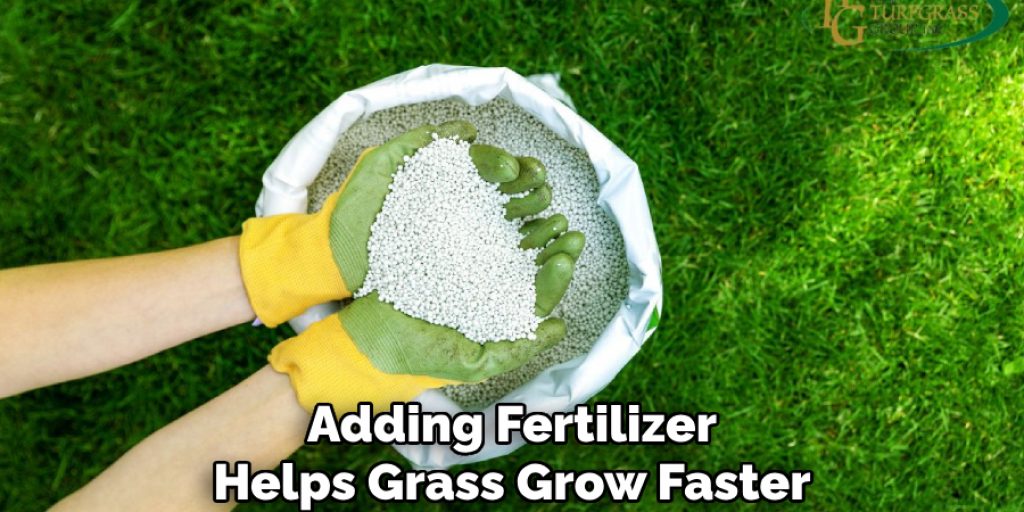
6. Topdressing:
Topdressing dry, cracked areas with compost and other organic materials can help the grass grow more roots to hold onto the soil and prevent drying out. With time, this grass will become stronger, and eventually, the problem will go away. You need to add a half-inch of topsoil or other compost material over the affected area.
7. Watering With a Sprinkler:
Another way to water your lawn is by using a sprinkler, which can create an overflow of water that helps the grass grow deeper roots that spread out horizontally into the soil. You should use this method if you have clay soil, which means you need less watering. It may take longer to get results over dry, cracked areas, but it’s an excellent method to use in hot weather.
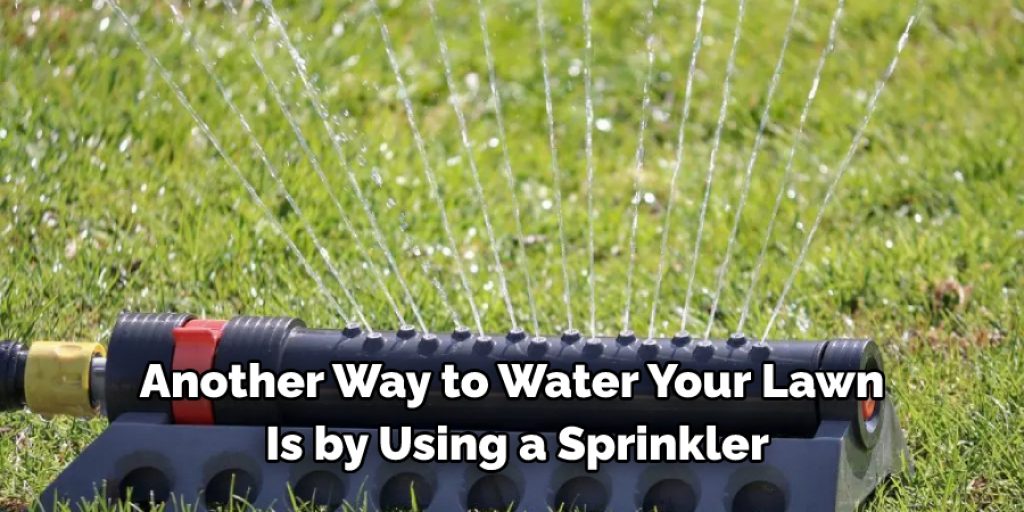
How Do You Fix Dry Cracking Soil?
Dry-cracking soil is a common problem in many lawns. It occurs when the soil surface dries, resulting in a hard, crusty layer that can damage grass blades and root systems. This condition often appears following a drought or at times of the year when temperatures are high, humidity is low, and watering schedules have been suspended.
The good news is that dry, cracked soil is a pretty easy problem to solve. Of course, the ideal time to apply a soil amendment is just before or immediately after a rain, but if it’s too late for that, no worries. Just give your lawn some extra water before you spread the topping. Doing so provides the material with the best chance of being absorbed into the soil. If you’re using a “top dressing” material that is not designed to be washed in, use a spreader or your hands to distribute the topping evenly over the lawn surface. Try to avoid clumps and piles.
Additional Tips:
- It’s important to regularly monitor and maintain your lawn to prevent the formation of dry, cracked areas.
- Consider using a mulching mower, which can help distribute grass clippings over your lawn, providing additional nutrients and moisture.
- Pay attention to weather patterns and adjust your watering schedule accordingly. During periods of hot or dry weather, you may need to water more frequently.
- Don’t overwater your lawn, as this can lead to other issues, such as fungal growth and shallow root systems.
- Consider consulting a professional landscaper or soil expert for more tailored advice on how to repair dry, cracked areas in your specific lawn. A professional can also help identify any underlying issues that may be contributing to the problem.
- Regularly aerating your lawn can also help prevent and repair dry, cracked areas by improving soil structure and water absorption.
- Keep in mind that repairing a dry, cracked lawn may take time and patience. Be consistent with your efforts and adjust as needed to see the best results. By following these tips and being proactive in your lawn care, you can help prevent and repair dry, cracked areas to maintain a healthy and vibrant lawn.
- In addition to the steps mentioned above, it’s important to address any underlying issues that may be causing dry, cracked areas in your lawn, such as poor drainage, compacted soil, or nutrient deficiencies. By addressing these issues, you can help prevent the problem from recurring in the future and promote overall lawn health.
- Lastly, be sure to mow your lawn regularly at the appropriate height for your grass type and avoid using dull blades that can cause damage to your grass. Proper mowing techniques can also help keep your lawn healthy and prevent dry, cracked areas.
Keep these tips in mind to effectively repair a dry, cracked lawn and enjoy a lush and beautiful outdoor space. With proper maintenance and care, you can achieve a lawn that is not only aesthetically pleasing but also healthy and resilient.
Remember to regularly monitor your lawn and make adjustments as needed to keep it in top condition. A little bit of effort and attention can go a long way in preventing and repairing dry, cracked areas in your lawn.
Frequently Asked Questions:
Q: Can You Prevent Dry, Cracked Areas in Your Lawn?
A: Yes, you can prevent dry, cracked areas by properly watering and maintaining your lawn. You can also address compaction and soil type issues by regularly aerating and adding compost to the soil. It’s important to choose the right grass variety for your lawn based on its conditions. Additionally, designated paths and play areas can help prevent compaction from heavy foot traffic.
Q: How Often Should I Water My Lawn to Avoid Dry Cracked Areas?
A: The frequency of watering depends on the type of grass, weather conditions, and soil type. Generally, it is recommended to water your lawn once a week with 6-10 inches of water for 15 minutes. Adjust this schedule based on your lawn’s specific needs and the weather.
Q: Can I Use Artificial Grass to Prevent Dry, Cracked Areas?
A: Yes, artificial grass can be used in high-traffic areas or designated paths to reduce compaction and wear on natural grass. However, it is important to consider the maintenance and cost of artificial grass before making a decision. It may also not be suitable for all climates and environments. You can consult a professional for advice on using artificial grass on your lawn.
Q: How Can I Tell If My Lawn Has Compacted Soil?
A: You can tell if your lawn has compacted soil by performing a simple “screwdriver test.” Push a screwdriver into the soil, and if it goes in easily, the soil is not compacted. If it takes more effort to push the screwdriver in or if it cannot penetrate the soil at all, then your lawn may have compacted soil.
Q: Can I Fix Dry Cracked Soil in Just One Season?
A: Depending on the severity of the dry, cracked areas and the methods used to repair them, it is possible to fix dry, cracked soil in just one season. However, it may take multiple seasons for noticeable results, and regular maintenance is key to preventing dry, cracked areas from reoccurring. Overall, it’s important to be patient and consistent in your lawn care efforts to achieve the best results.
Conclusion:
There are a lot of ways on how to repair a dry cracked lawn. However, the best way to improve a dry, cracked lawn is patience and careful planning. First, identify the type of soil your yard has by using a garden hose on wet grass for several hours at different times throughout the day. If you live in an urban area or have no trees nearby, sandy clay-based soils likely exist beneath your turfgrass.
In this case, organic compost should be added to infuse more water retention into the dirt so that less moisture will evaporate from below ground level during hot periods of summertime weather. On the other hand, if water puddles up quickly after rainfall and doesn’t sink in as mud does, then chances are good that you have loam-based soil. In this case, it would be best to add sand to your dirt to balance things out. Finally, if you combine the two soil types, then adding both organic compost and sand is likely your best bet.
Check out our article How to Make Lawn Stripes

